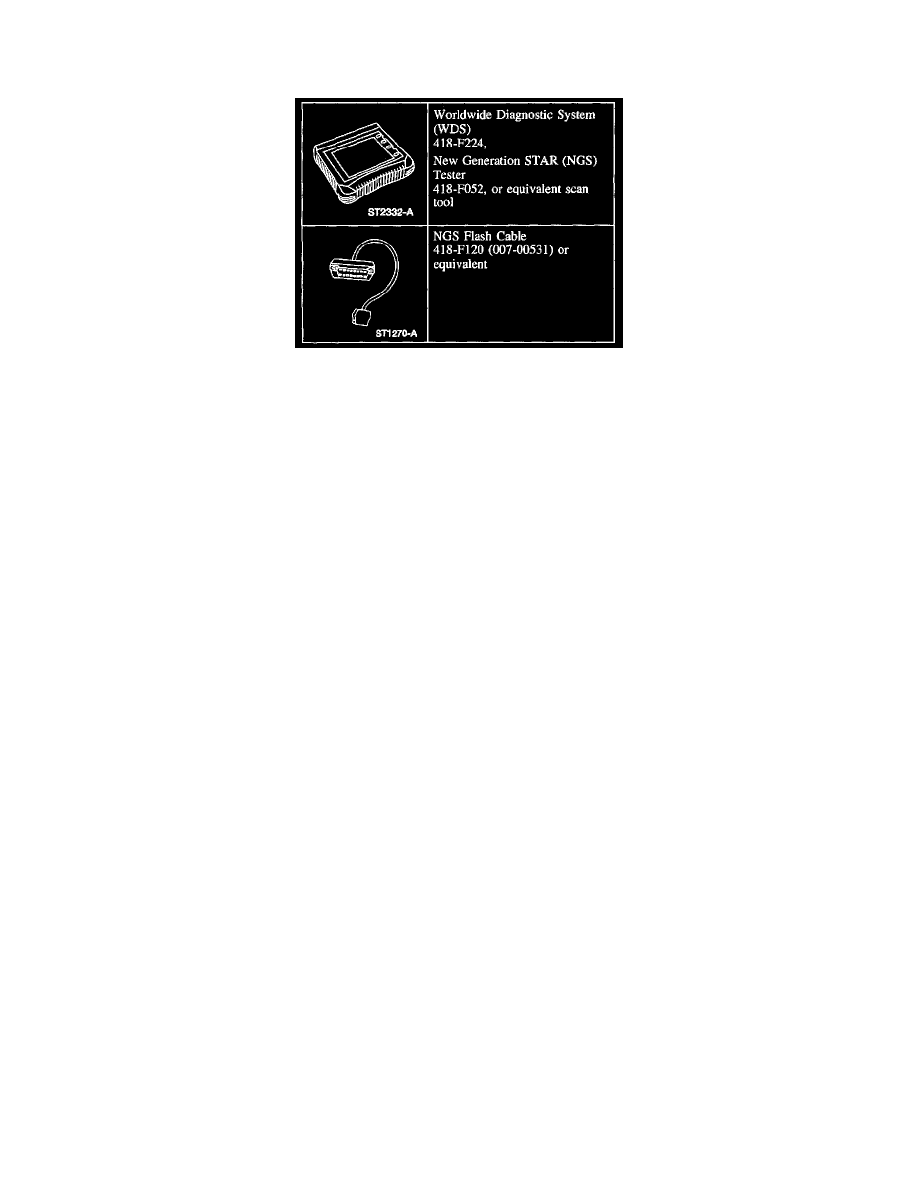F 150 Super Crew 2WD V8-5.4L Prop SOHC VIN Z (2003)

Brake Bleeding: Service and Repair
Bleeding - Components
Special Tool(s)
Bypass Condition Test
To perform this test:
1. Disconnect the brake lines at the brake master cylinder.
2. Plug the outlet ports of the brake master cylinder.
3. Apply the brakes. If brake pedal height cannot be maintained, the brake master cylinder has an internal leak and must be rebuilt or a new master
cylinder installed.
Compensator Port Check
The purpose of the compensator ports in the brake master cylinder is to supply any additional brake fluid required by the system due to brake pad wear
and to allow brake fluid returning from the brake lines to the brake master cylinder to enter the brake master cylinder reservoir.
The returning brake fluid will cause slight turbulence in the brake master cylinder reservoir. Turbulence seen in the brake master cylinder reservoir
upon release of the brake pedal is normal and shows that the compensating ports are not plugged.
Master Cylinder Priming-In-Vehicle or Bench
WARNING: Use of any other than approved DOT 3 brake fluid will cause permanent damage to brake components and will render the
brakes inoperative.
WARNING: Brake fluid contains polyglycol ethers and polyglycols. Avoid contact with eyes. Wash hands thoroughly after handling. If
brake fluid contacts eyes, flush eyes with running water for 15 minutes. Get medical attention if irritation persists. If taken internally, drink
water and induce vomiting. Get medical attention immediately.
CAUTION: Do not allow the brake master cylinder reservoir to run dry during the bleeding operation. Keep the brake master cylinder reservoir filled
with the specified brake fluid. Never reuse the brake fluid that has been drained from the hydraulic system.
CAUTION: Brake fluid is harmful to painted and plastic surfaces. If brake fluid is spilled onto a painted or plastic surface, immediately wash it with
water.
NOTE: When any part of the hydraulic system has been disconnected for repair or installation of new components, air can enter the system and cause
spongy brake pedal action. This requires bleeding of the hydraulic system after it has been properly connected. The hydraulic system can be bled
manually or with pressure bleeding equipment.
NOTE: When a new brake master cylinder has been installed or the system has been emptied, or partially emptied, it should be primed to prevent air
from entering the system.
